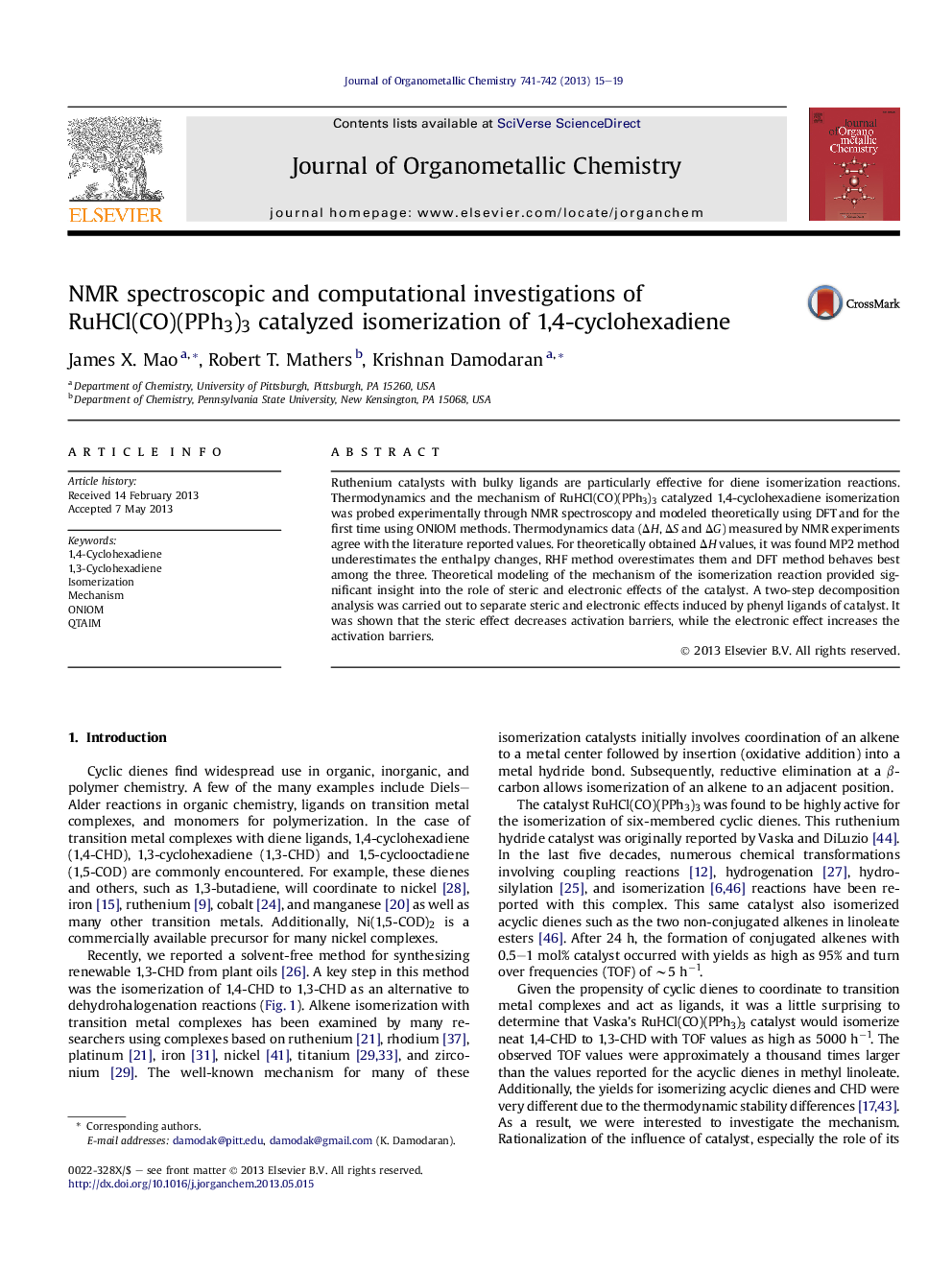| کد مقاله | کد نشریه | سال انتشار | مقاله انگلیسی | نسخه تمام متن |
|---|---|---|---|---|
| 1325663 | 1499897 | 2013 | 5 صفحه PDF | دانلود رایگان |

• Reasons for RuHCl(CO)(PPh3)3 to be an efficient catalyst for isomerization reactions.
• Thermodynamics of isomerization investigated spectroscopically and computationally.
• Mechanism of isomerization explored via HOMO/LUMO, QTAIM and ONIOM calculations.
• Steric and electronic effects decrease and increase activation barriers respectively.
Ruthenium catalysts with bulky ligands are particularly effective for diene isomerization reactions. Thermodynamics and the mechanism of RuHCl(CO)(PPh3)3 catalyzed 1,4-cyclohexadiene isomerization was probed experimentally through NMR spectroscopy and modeled theoretically using DFT and for the first time using ONIOM methods. Thermodynamics data (ΔH, ΔS and ΔG) measured by NMR experiments agree with the literature reported values. For theoretically obtained ΔH values, it was found MP2 method underestimates the enthalpy changes, RHF method overestimates them and DFT method behaves best among the three. Theoretical modeling of the mechanism of the isomerization reaction provided significant insight into the role of steric and electronic effects of the catalyst. A two-step decomposition analysis was carried out to separate steric and electronic effects induced by phenyl ligands of catalyst. It was shown that the steric effect decreases activation barriers, while the electronic effect increases the activation barriers.
As an efficient catalyst for 1,4-cyclohexadiene isomerization, RuHCl(CO)(PPh3)3 introduces both steric and electronic effects. It was found that the steric effect decreases activation barriers of the rate determining step, while the electronic effect increases it.Figure optionsDownload as PowerPoint slide
Journal: Journal of Organometallic Chemistry - Volumes 741–742, 1 October 2013, Pages 15–19